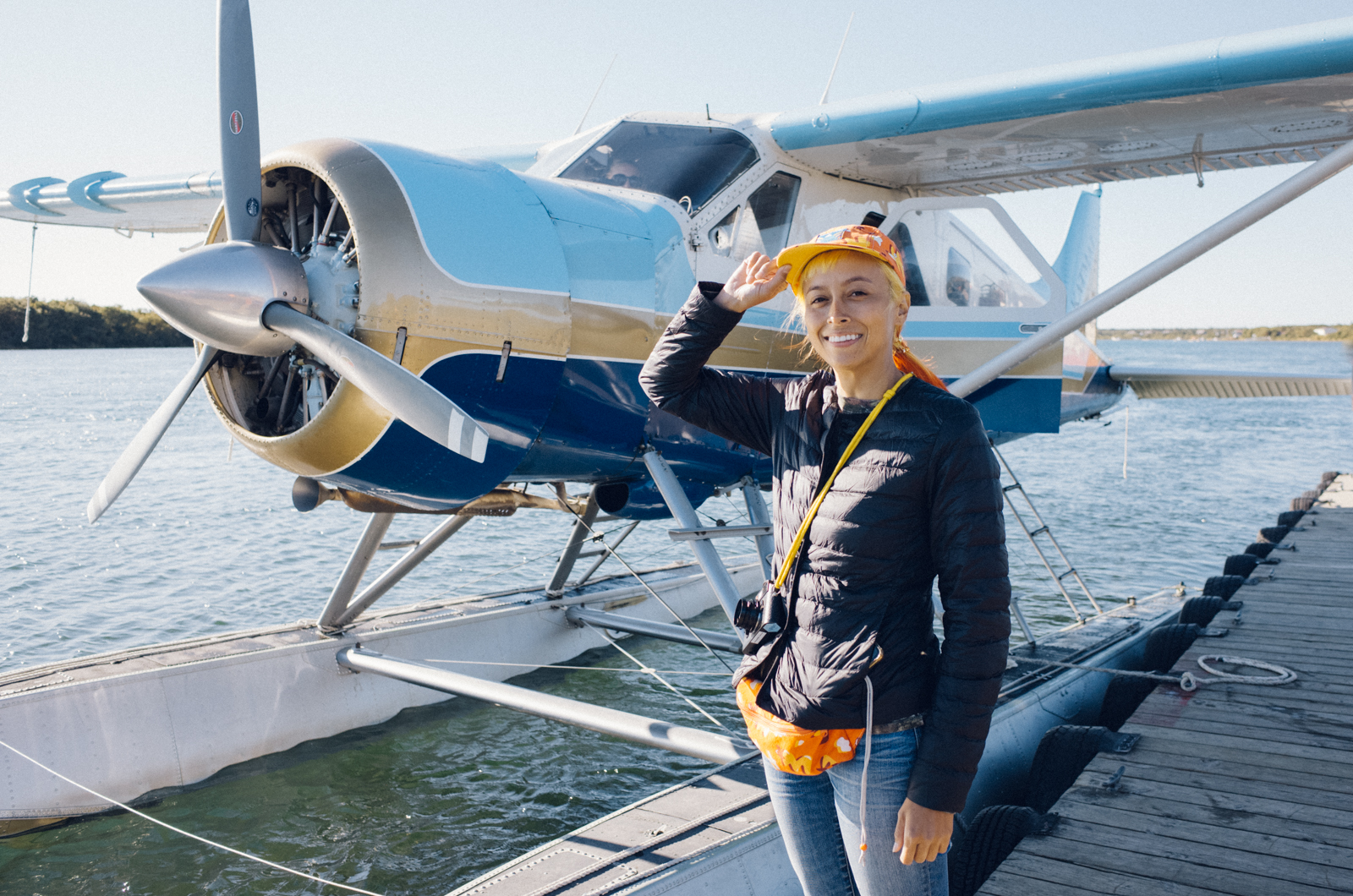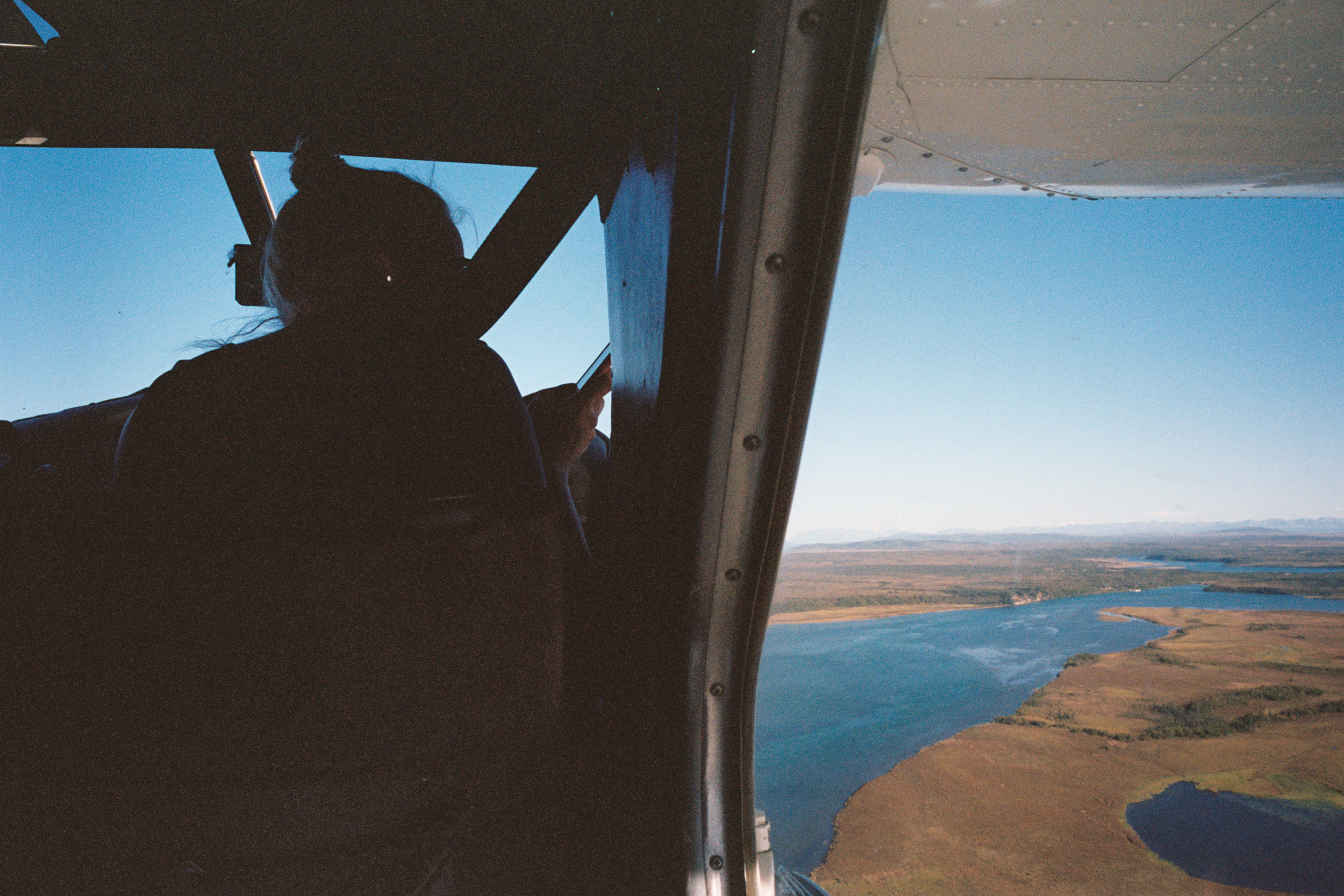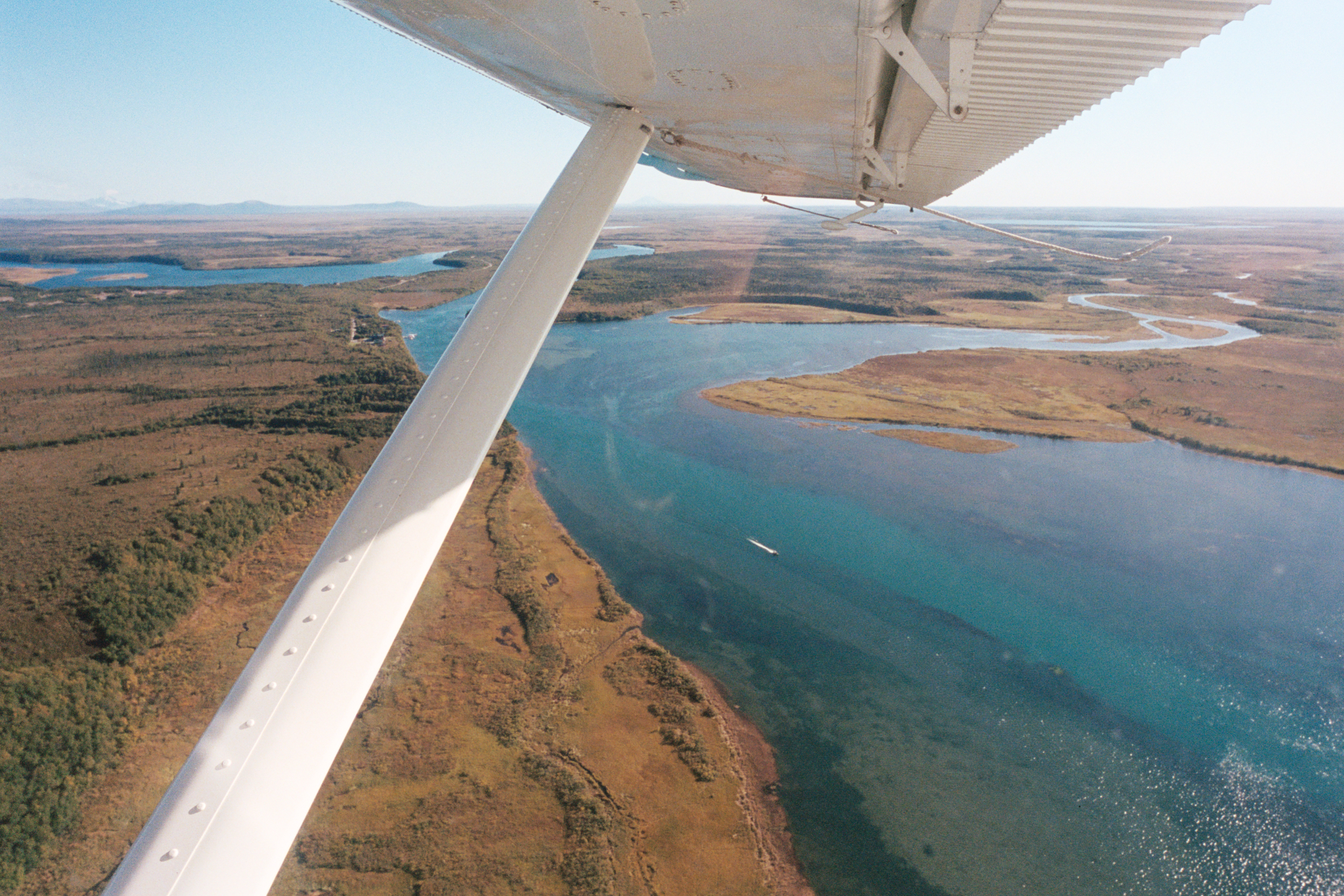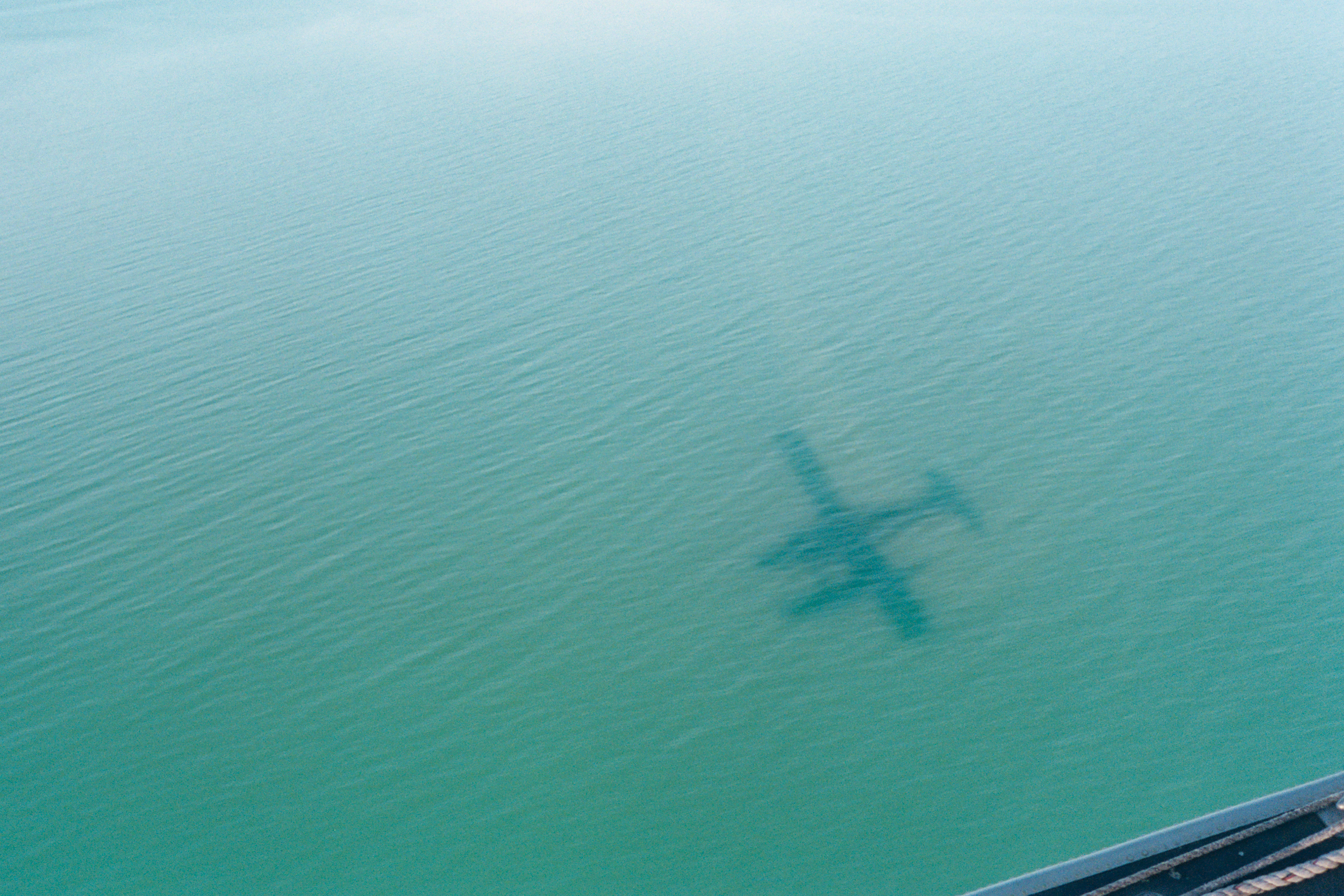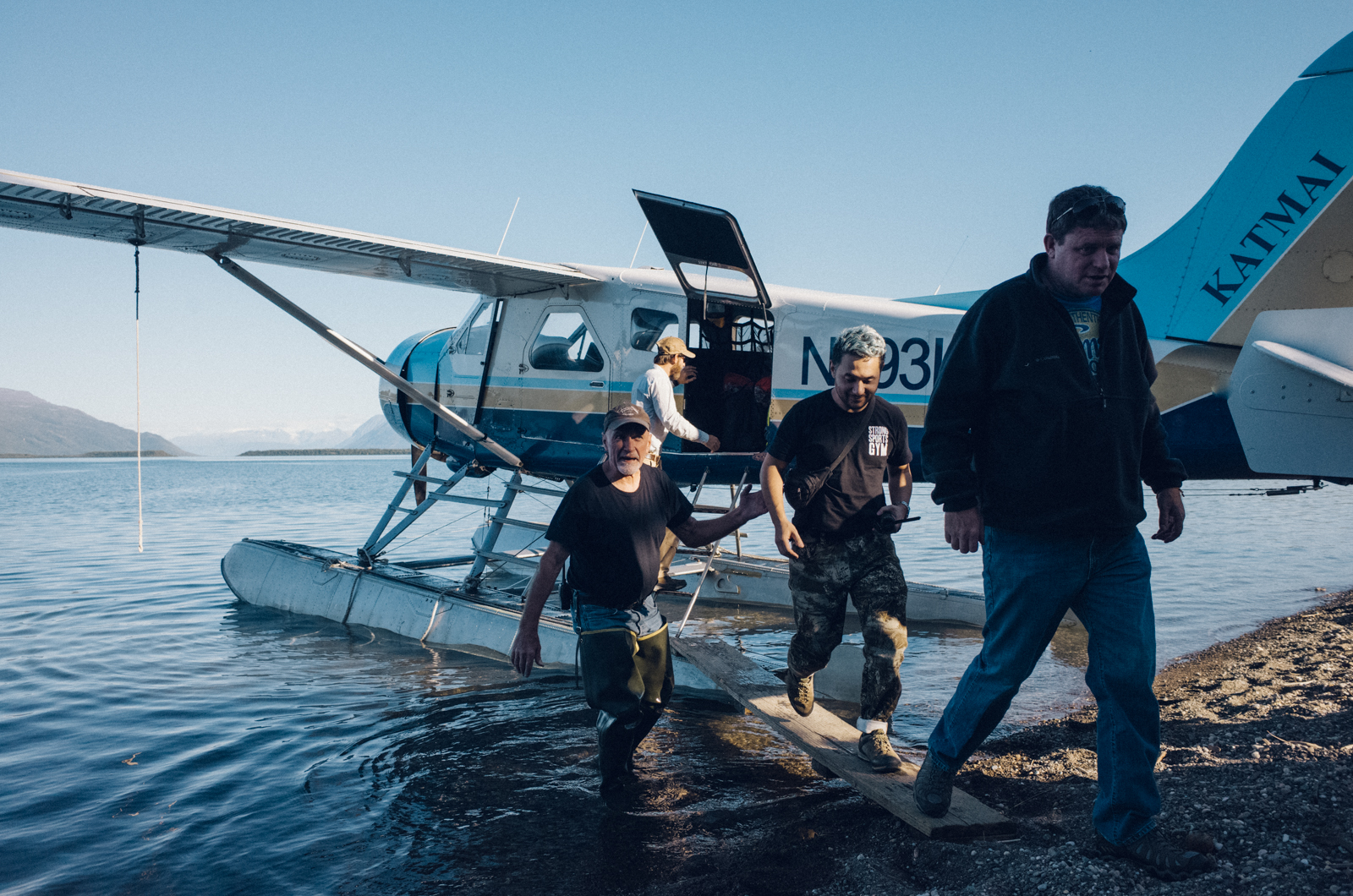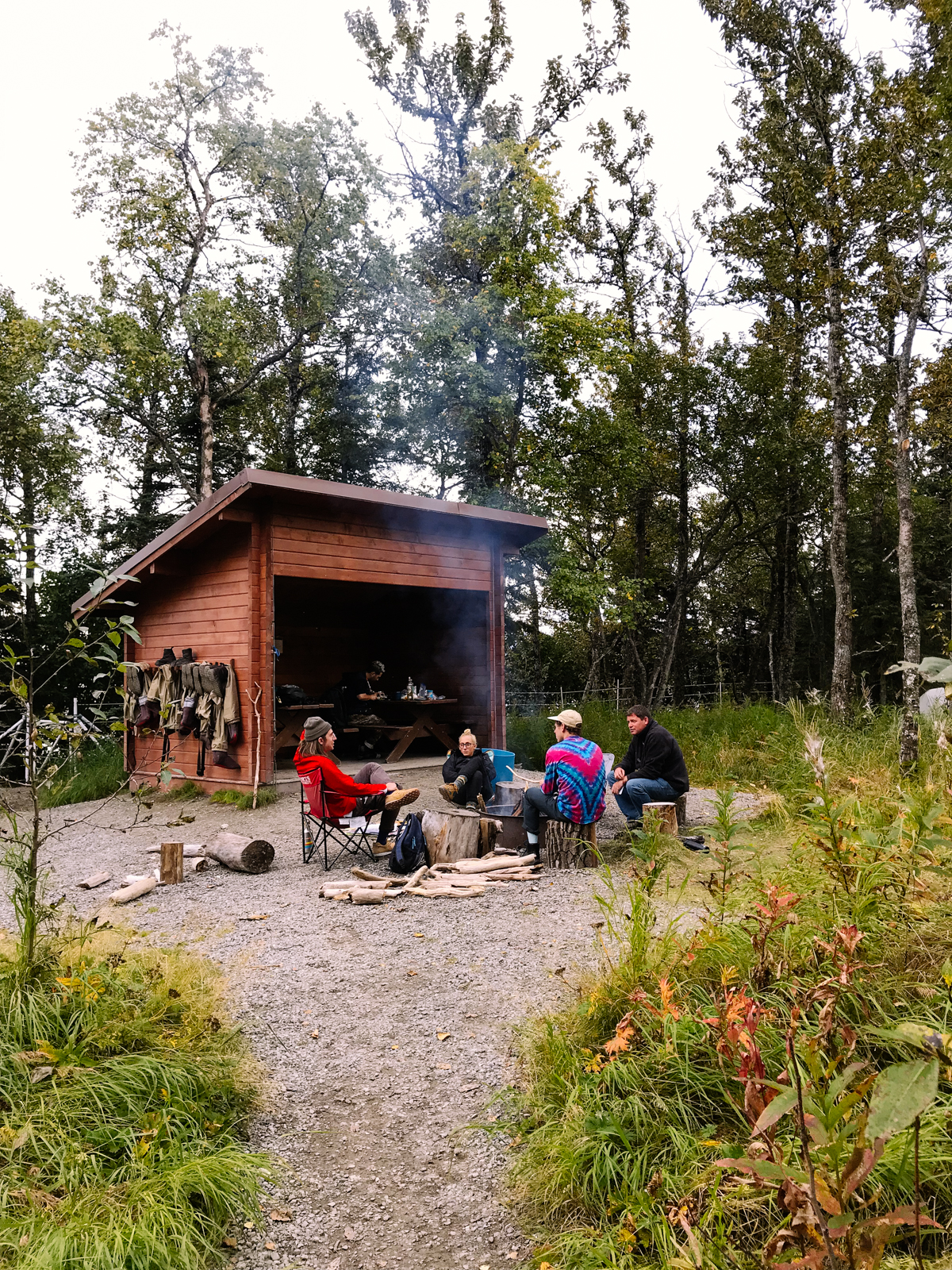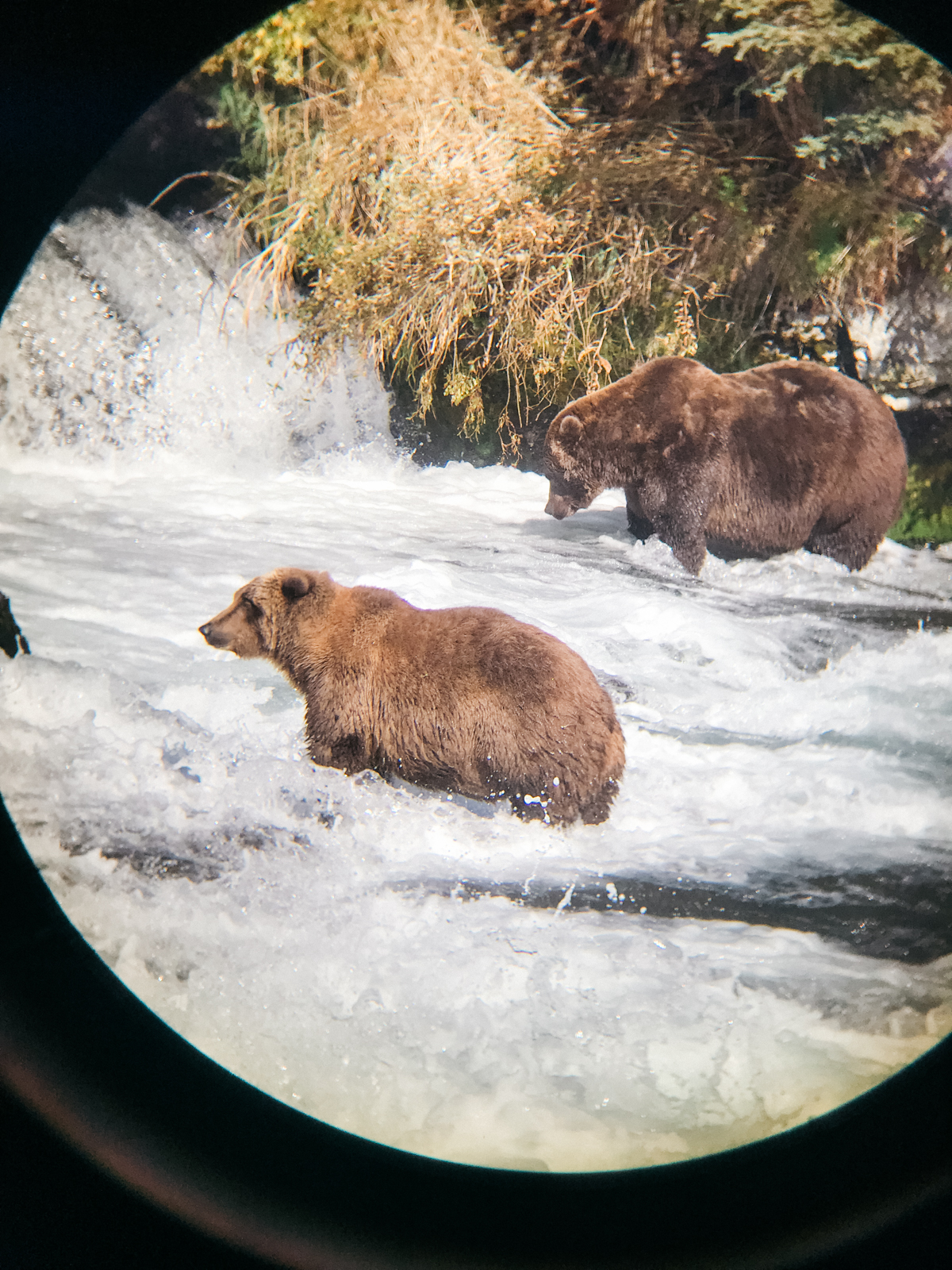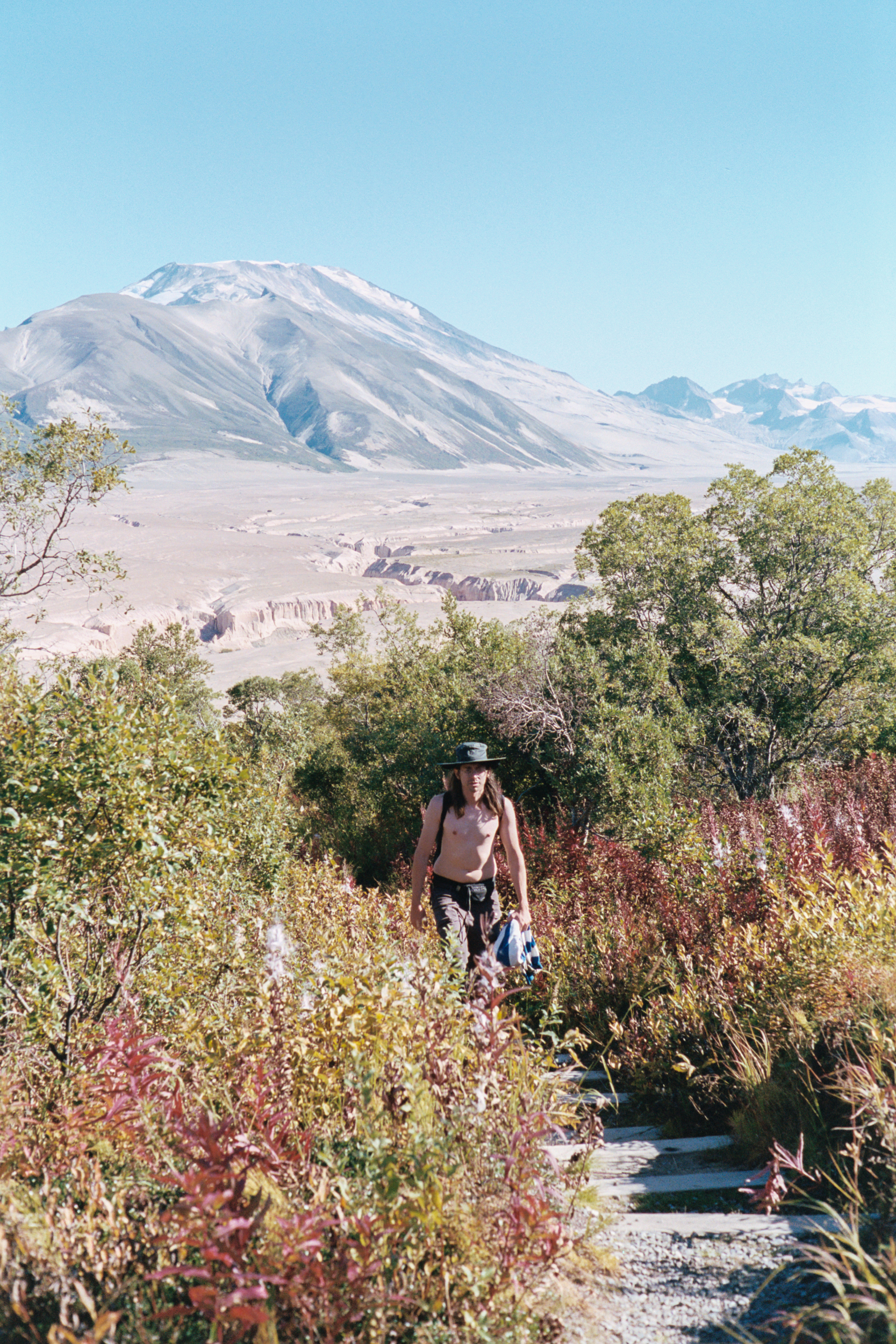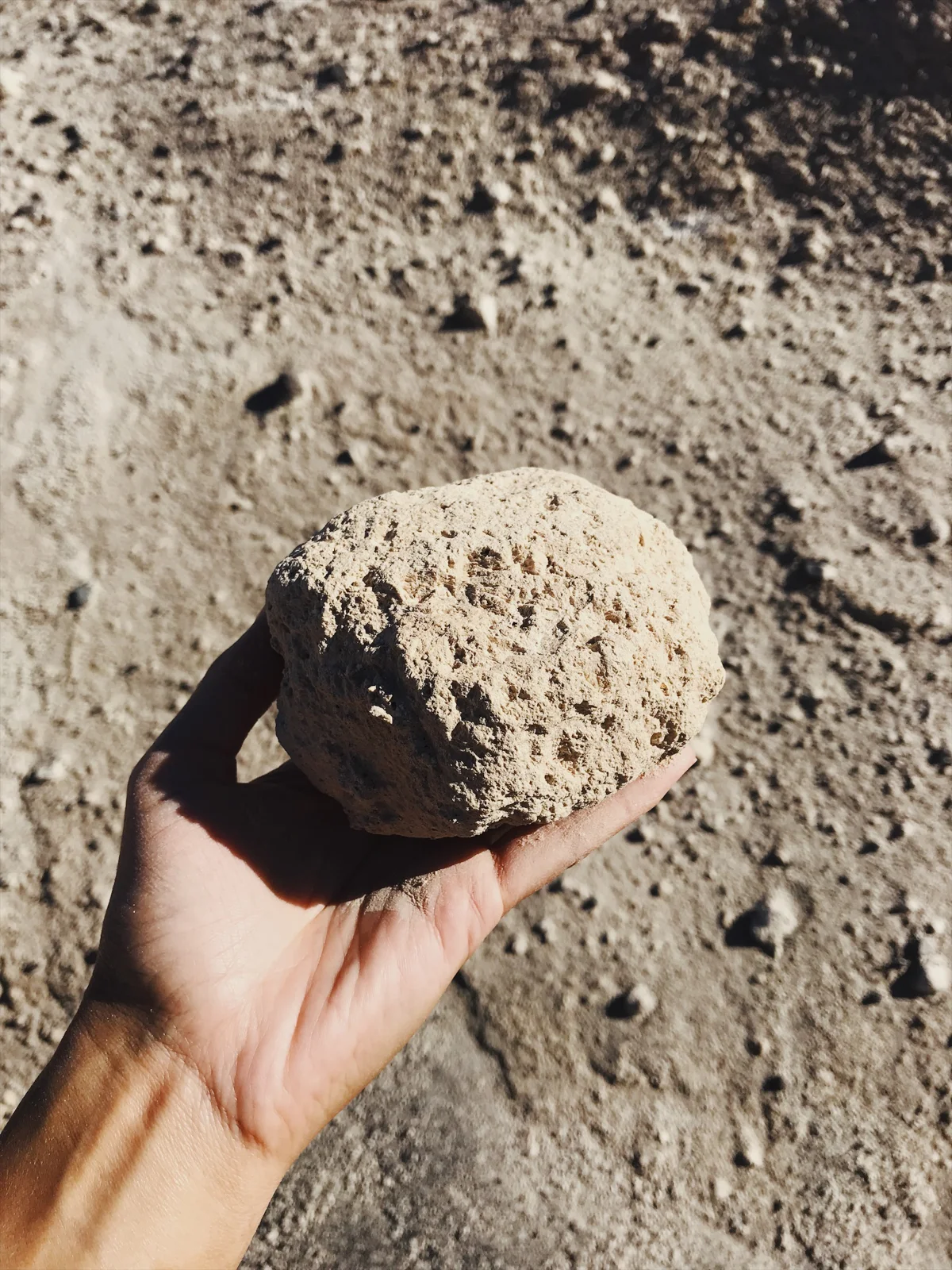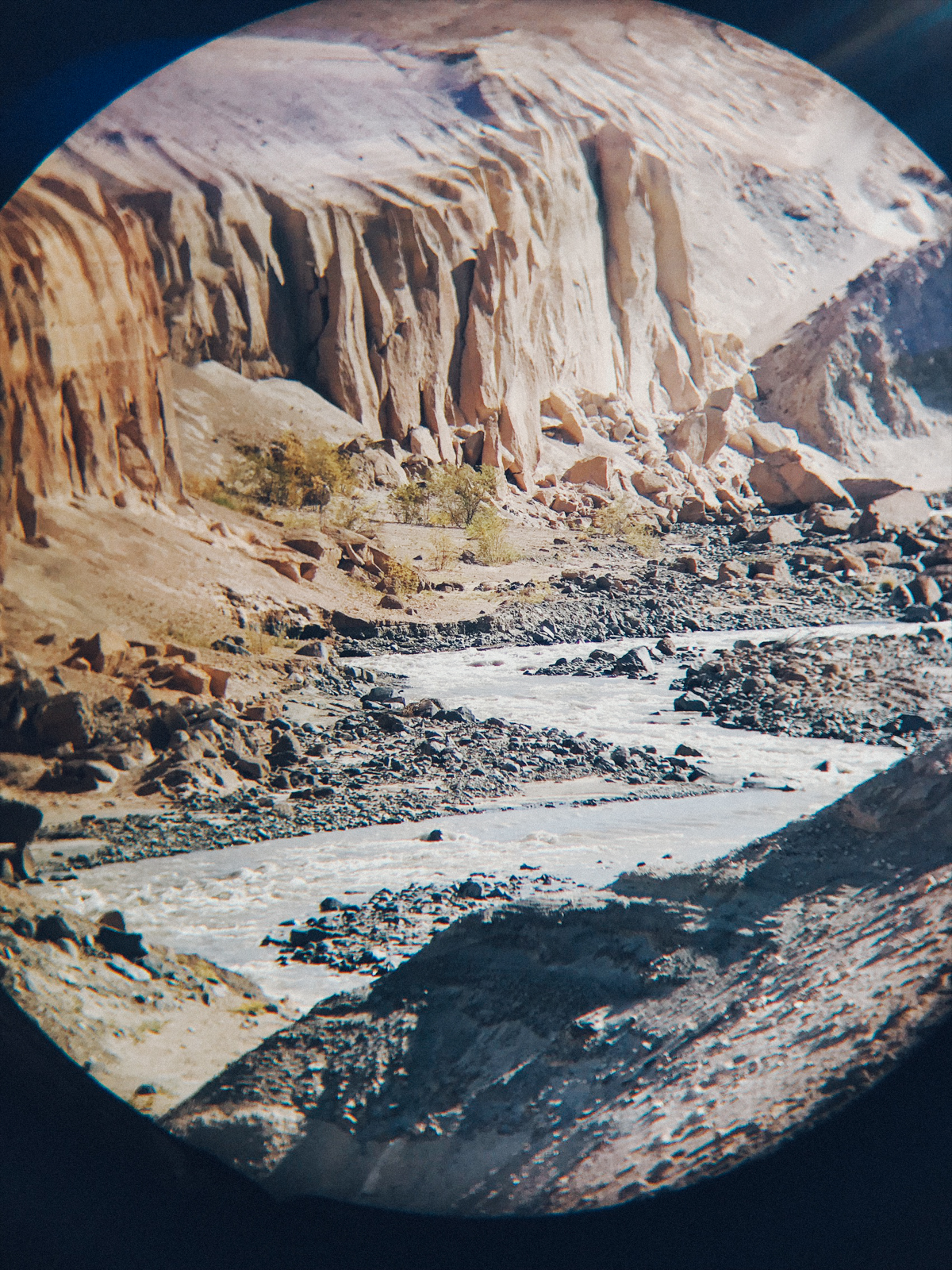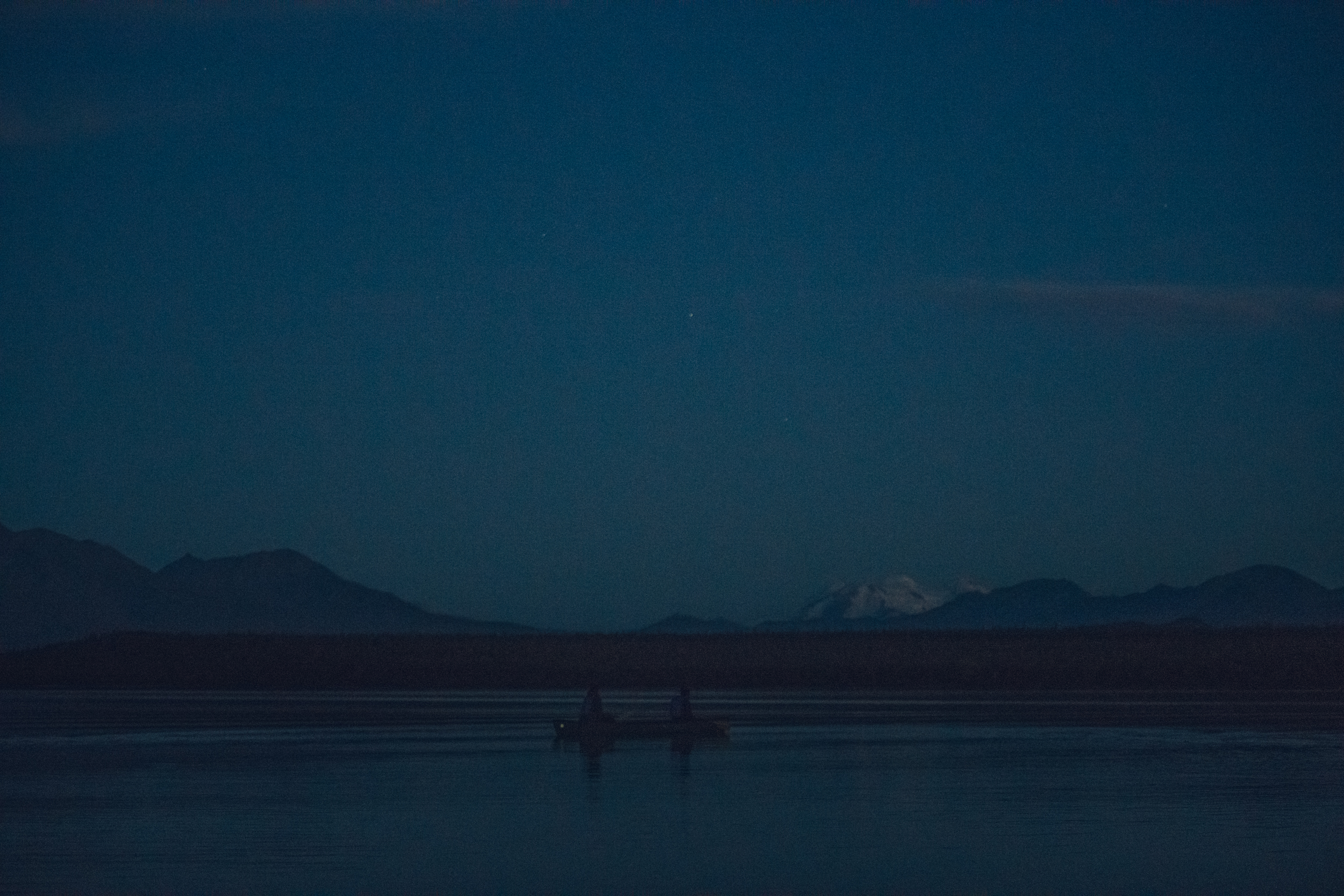Camping with Friends & bears in Katmai National Park
“I have an irrational (probably rational) fear of bears...”
Unless I sleep with earplugs while camping, I’ll often lay awake at night and listen to every little sound outside the tent— my imagination running wild— imagining that I can hear a hungry bear outside my tent. I have actually seen a bear in my campsite before; I was in Lake Tahoe, and at dinnertime a black bear wandered into the campsite next to ours, and started looting food and trash at an unattended picnic table. The bear was a very cute, small black bear… and I was absolutely terrified of it. My fear of bears doesn’t stop me from camping, and it certainly won’t stop me from camping at a campsite literally surrounded by (big brown) bears in Alaska. I very much live by the mantra that if something scares the shit out of you, that’s because it’s worth doing.
My desire to visit and camp in Katmai National Park was the seed that grew into an entire 3-week long Alaskan adventure. Last year, photos of the bears in Katmai came up on my friend Jenny Czinder’s Instagram feed, and when I saw them, I was instantly obsessed. She had these videos of brown bears and their cubs eating and playing just a few feet from where she was standing. These wild predators were just casually going about their business, with no mind paid to the human shaped blobs of meat standing around taking their photos. This blob of meat wanted to be there, so I started researching.
“I very much live by the mantra that if something scares the shit out of you, that’s because it’s worth doing. ”
Last year in January I woke up to an alarm I had set to remind me to hop online to make reservations (8 months in advance) for camping at Brooks Camp in Katmai. This was the furthest in advance I had ever planned any trip.
There are no roads you can drive to get to Brooks Camp in Katmai National Park, the only option is to fly. There is not an airport at Brooks Camp— there’s only a lake— so you must fly in on a float plane! The cost for the reservation for 6 people to camp at Brooks Camp for 4 nights was only $198, however the cost of the flights is significantly higher ($357 return for flights from Anchorage to King Salmon and $228 return for the float plane into Brooks. And that’s on top of our flights to Alaska in the first place).
After many months of planning, September finally rolled around. Our group (Los Angelenos including myself, my boyfriend Jason, and our friends Alex, Paul and Kitao along with our one Alaskan friend Kurt) met up in Anchorage the day before our trip to Katmai. We all flew in with camping gear; including tents, cold weather sleeping bags, camping chairs, cooking stuff, freeze dried food, snacks, clothes, rain gear, cameras, etc. Nothing for camping is available for rent or purchase in Katmai, so you have to carefully pack in everything.
Logistics, packing, and several legs of travel finally done, we were in the middle nowhere Alaska town of King Salmon. There we were on a dock on a river, waiting for our float plane to arrive. We were absolutely giddy with anticipation… the real fun was about to begin!
“Arriving in Katmai is like stepping into the pages of a 1960s National Geographic magazine.”
Arriving in Katmai is like stepping into the pages of a 1960s National Geographic magazine. The cabins of Brooks Lodge were built decades ago in that timeless 20th century log cabin style, and these float planes are mostly DeHavilland Otters and Beavers which discontinued production after the 60s. The few buses in Katmai are repurposed school buses from the 60s.
The “airport” landing is unlike any other; you gently touch down onto the glassy teal water of Naknek Lake, and coast to its black sand shore. Along the shore are parked other freshly painted, colorful float planes, and in the water of the lake—a stunningly short distance away— THERE ARE LITERALLY BEARS. The bears are swimming, floating on their backs eating salmon, cubs are playing as their mama bear watches over. How is somewhere this wild and charming this easily accessible? That’s Alaska… It's the real deal.
As soon as we arrived, and before we could go wandering in the direction of the nearest bear… we were ushered into the National Park Service visitor center for “Bear School”. We learned the do’s and don’ts about camping and co-existing in this unique environment with brown bears. You must keep a 100 yard distance from the bears, carefully store food and belongings in gear and food caches, and keep your presence known to bears while walking and hiking; either by holding a conversation, singing, or just repeatedly calling out “HEY BEAR” (at all times, whether you see bears or not). The bears in Katmai have not been conditioned to see humans as a source of food (unlike places like Yosemite or Yellowstone where they regularly have access to careless visitor’s food, and have learned to seek it out). The bears in Katmai have abundant natural food sources, so the bears continue to ignore or avoid people.
Jason, Alex, Paul and Kurt (Kitao is in the cooking shelter making dinner)
After our check in and Bear School, we made the 1/4 mile or longer walk to the Brooks Campground, and found places to set up our tents. The campground sits right behind the beach of the lake, its perimeter clearly marked by an electrified fence. Having the electric fence creates a very shallow sense of security that we all just tried not to think too hard about.
With our tents set up, our designated camp chef Kitao started to prepare our first dinner as the sun set. We were drawn out of camp to watch the unbelievably calm and beautiful display of color and reflection on Naknek Lake. Everyday at this time of evening, a parade of bears would walk along the beach and past the camp, so we’d have to be aware, and quietly retreat back behind the electric fence from time to time in order to let bears and their cubs pass. From our campfire and tents we have front row viewing of the regularly passing bears.
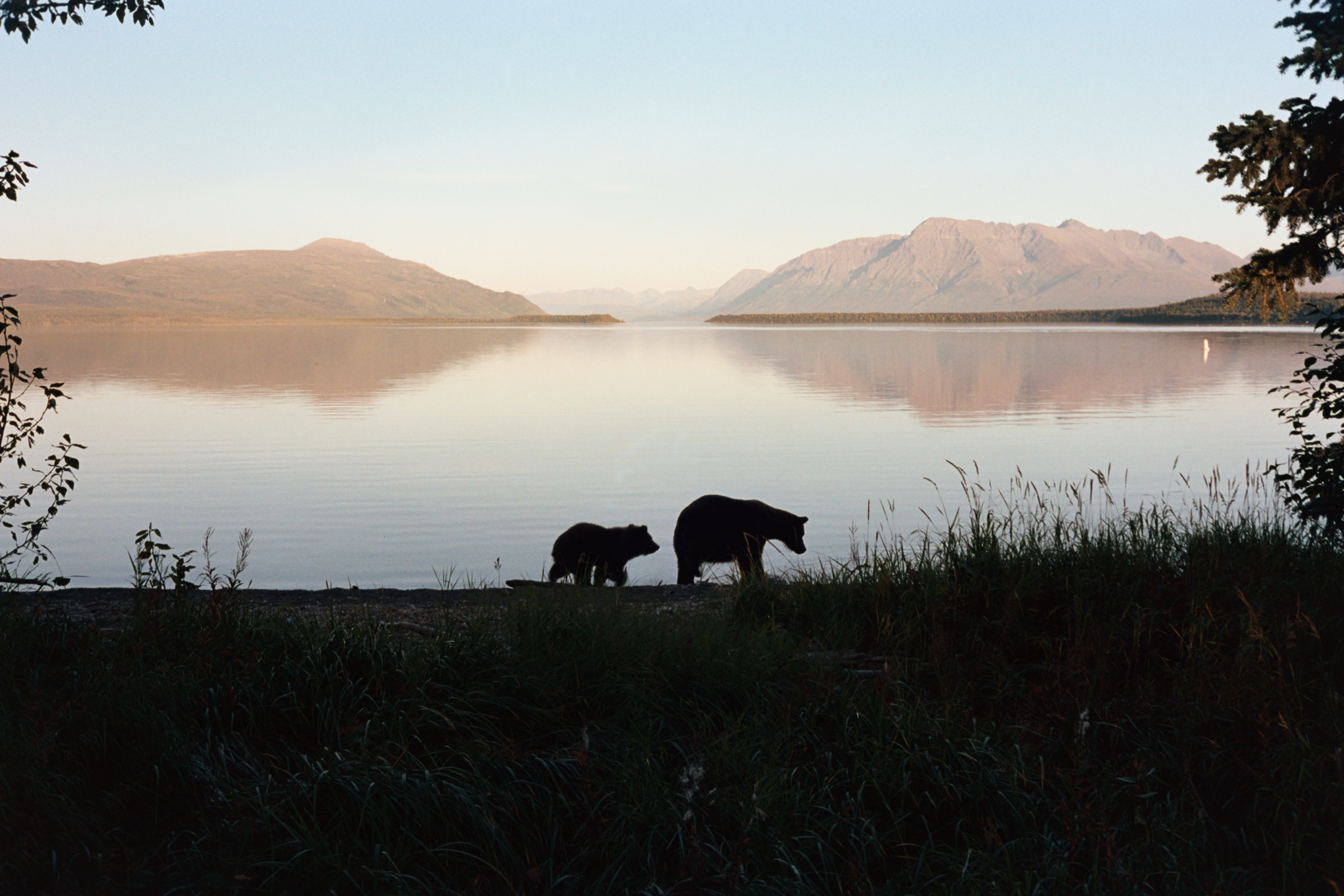
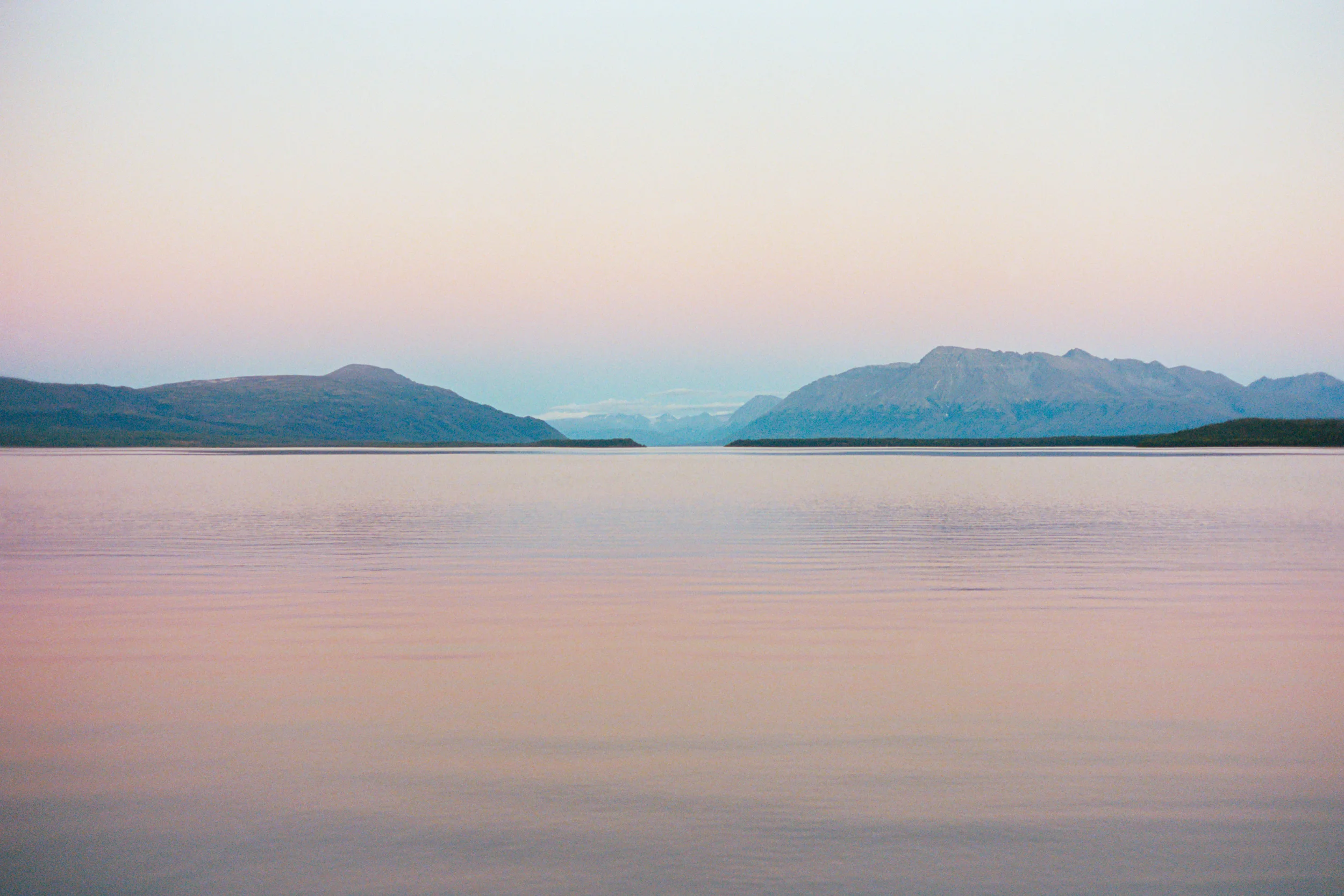
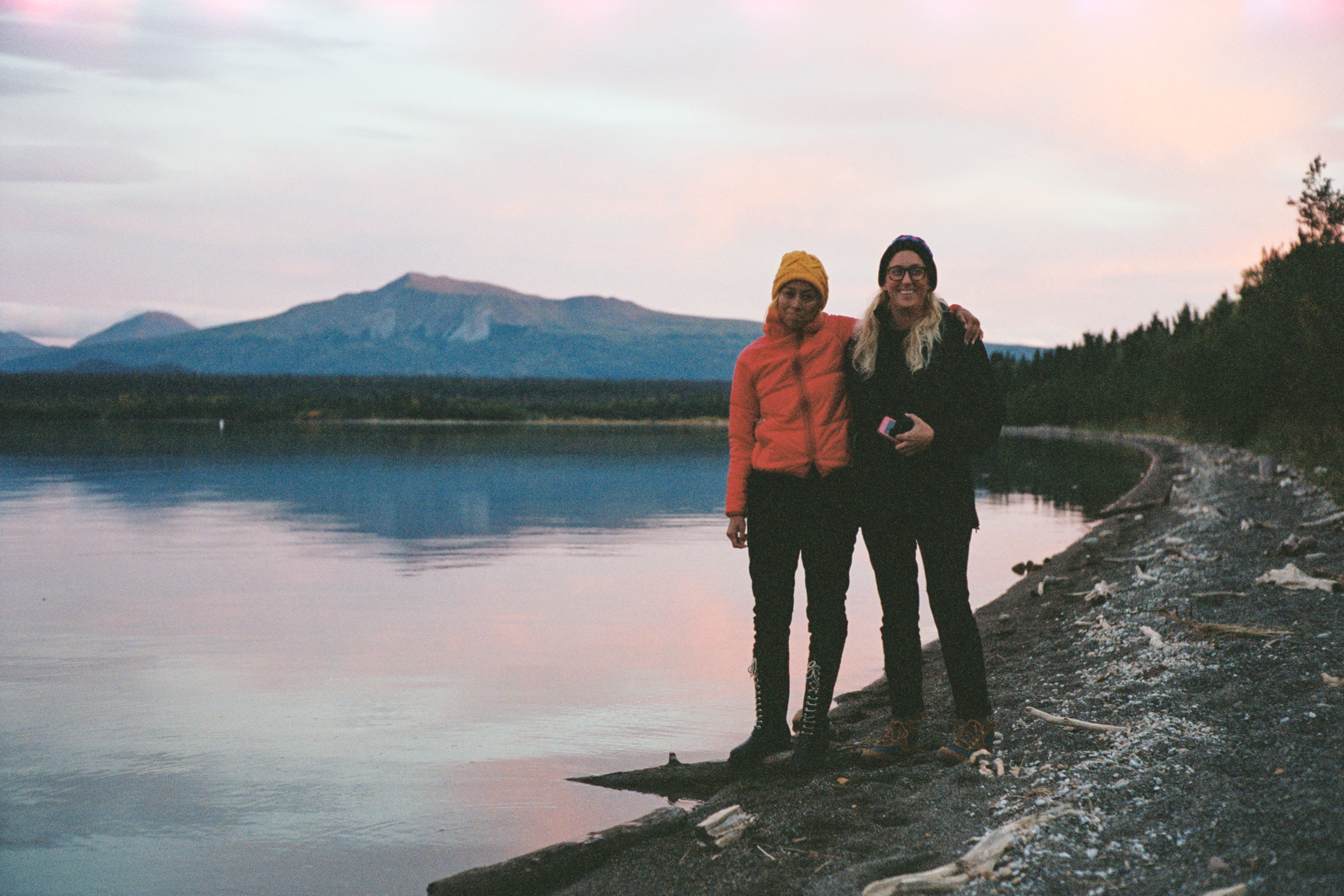
BEAR WATCHING AT BROOKS FALLS
The big draw of Brooks Camp and Katmai National Park is bear viewing at Brooks Falls. There are live-streamed webcams of the bears fishing for salmon at Brooks Falls, and people from all over the world log on to watch them. On the shore at the falls there are elevated viewing platforms, where you can post up against the railing with your DSLR and massive lens, to get that perfect shot of a bear catching a leaping salmon in his mouth.
Bear watching at Brooks Falls is amazing, but it wasn’t our favorite way to witness the bears in Katmai. We found that standing on the platforms, elbow to elbow with gear-head photographers with their 3-foot long, 500mm lenses got old after about 30 minutes. The bears were slow and didn’t really move much, so after watching them catch a few fish, we were ready for other activities. There are so many bear encounter opportunities outside of Brooks Falls; everyday when you’re just trying to walk the paths in camp you’re confronted with bears that force you to find detours into the heavy brush.
Valley of Ten Thousand Smokes
You can take a day trip to the “Valley of Ten Thousand Smokes” from Brooks Camp. The National Park ranger-led tour takes a few hours by bus to reach, costs $90, and has nothing to do with bears— as it turns out, Katmai is about more than just bears!
In 1912, the largest eruption of the 20th century happened in what is now Katmai National Park with the eruption of Novarupta (it was a blast MUCH bigger than Mt St. Helens, Krakatoa, or any other volcanic eruption you’ve actually heard about). For a long while after the eruption, thousands of fumaholes vented steam from the ash covered floor of the once fertile Alaskan valley. This is how the Valley of 10,000 Smokes got its name. The National Park was established in 1918 in order to protect this geologically unique area affected by the volcanic eruption.
Jason, Kitao and Paul (I accidentally opened the film door of my camera before rewinding the roll while on the tour.)
Taking the old school bus to the valley with our goofy group of friends was super fun, and felt just like taking a school field-trip (our group being the slackers in the back of the bus making inappropriate jokes the whole time). Despite our obnoxious jokes, we had a great time, learned a lot, and the ranger loved us! When we got to the valley, we made the not-terribly-short and slightly steep hike down to the bottom of the valley to explore where a river and waterfall have carved through the ash-scape. We found the ground covered with pumice stones which were created by the eruption; when so many air bubbles would be trapped in the cooling magma, the result was this stone that contains more air pockets than it does rock, so it is superlight and bubbly like a sponge. I don’t think there are any bears in the valley (probably because food sources are limited here). It was interesting to see plant and animal life returning to this valley after it had all been wiped out by the eruption just a hundred years ago.
Dumpling Mountain overlook
Paul on dumpling mountain.
If you’re camping at Brooks Camp and exploring Katmai, you’ll soon discover that it’s a pretty small place. Without roads, you’re limited to just a few walking trails, and where you can paddle to in a canoe. One of the few (or only) hikes that you can do from Brooks Camp is a moderate uphill climb to the top of “Dumpling Mountain”. A group of us hiked up the small mountain, making sure to keep chatting the whole time, as we were instructed to do in “Bear School”. We didn’t encounter any bears on the hike, during they day they seemed to be all concentrated near the river (where all the fish are). From up on the mountain you can see an incredible panoramic view of Naknek Lake to the left, Lake Brooks to the right, and the bear’s favorite river and falls between the two. You also have a better vantage point see the distant mountains and volcanic peaks of Katmai Nationl Park. In September the trail is full of berry bushes, so we were able to pick ourselves some berries along the walk.
I don’t know how to sum up our trip to Katmai. It was the best time I’ve ever had with friends, and one of the most incredible places I’ve ever been. It’s the adult summer camp experience, except that you can do whatever you want, when you want (as long as the bear boundaries are respected), within the most pristine wilderness and wildlife habitat that humans could have such easy and comfortable access to. You should go, and be sure to take all of your best friends!
After dusk, Kitao and Paul canoeing on Naknek Lake.

